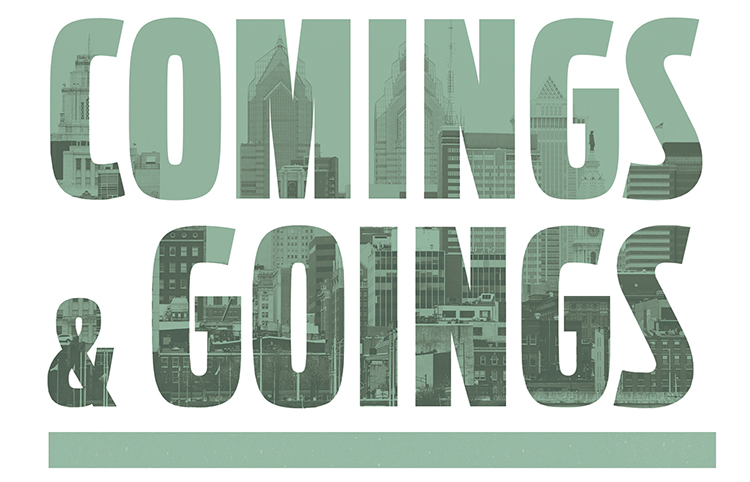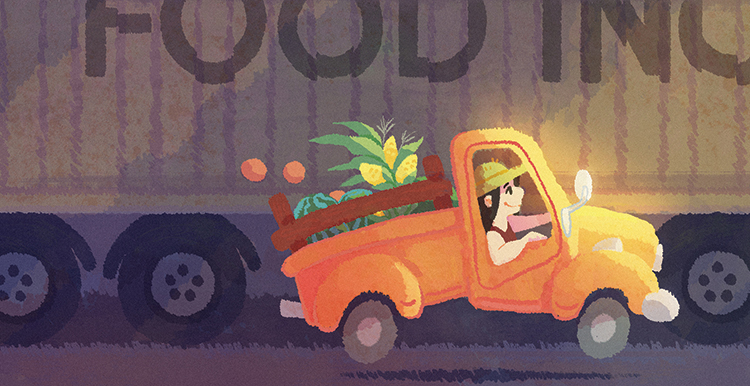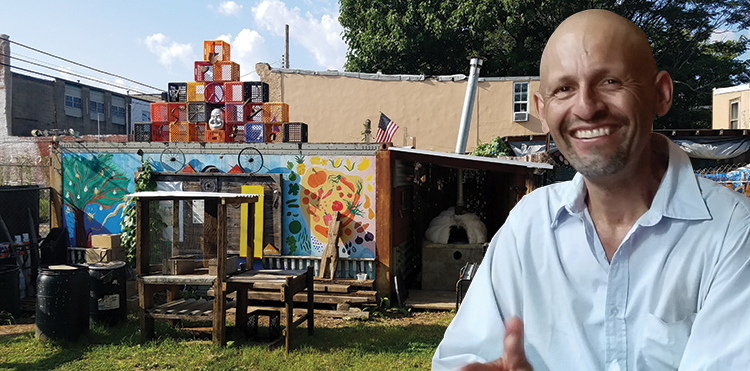Artists stand in solidarity and look toward the next election
By Brittany Barbato
On Jan. 20—President Trump’s inauguration day—commuters and residents all around Philadelphia found signs of resistance dropped from dozens of buildings encouraging them on their way to work: You can’t take away our resilience, our humanity, our strength, our beauty. Aquí me quedo and Sanctuary city for everybody read two of the signs. Though the voices felt personal, they also captured a collective anxiety and hope on that morning.
The project, “Signs of Solidarity,” started as an effort to speak out and lend support to the community after the divisive 2016 presidential election. Artists and concerned Philadelphia citizens Conrad Benner, Aubrie Costello and Eric Preisendanz hatched a plan to create and hang banners from private homes and buildings that would reinforce messages of love and unity to counteract the hate they felt sweeping the country. Support for the project from fellow artists and building owners was immediate and overwhelming.
“We received copious amounts of ‘yeses’ from artists and building owners who wanted to be a part of it,” says Costello. “I was overwhelmed by how quickly the scale grew.” If you lined the signs up next to each other, they’d stretch 150 yards, or the length of a football field. Amassing more than 3,600 square feet, they quintupled the size of the Oval Office where the new president would soon find himself in control of decisions impacting the lives of all Americans, including the very people in protest.
In a matter of weeks, “SOS” evolved into a citywide effort of more than 30 Philly-area artists and dozens of local building and business owners. It also expanded to include 30 creatives in Atlanta, Georgia. The organizing trio, who know each other through the local art scene, quickly combined their strengths to pull off the large exhibit. Benner, streetsdept.com founder and editor, was in charge of external communications; Costello, an artist known for her silk graffiti installations, tackled logistics such as materials, design and artist communications; Preisendanz, a curator, helped develop messaging and handled the physical installations—climbing ladders, mounting hardware and tying lots of knots.
“It was absolutely important and necessary to co-lead and co-organize ‘Signs of Solidarity,’” Costello says. “Logistically, we could not have done it without each other and the 30-plus Philly creatives who helped us realize this project from start to finish.”
Kimberly Connerton, an installation artist who participated in the project, viewed “SOS” as an opportunity to do what art does best: create “a wider, more inclusive space for everyone to live in,” she says. Her sign hung above a window at Paradigm Gallery and Studio in South Philadelphia. She created small, golden lettering to outline her biggest hope: May every living being be safe and free.
Notable Philadelphia mosaic artist Isaiah Zagar also joined the effort. Featuring a sketch of an elongated mouth baring 38 teeth, his sign flapped against the stone arches of Broad Street Ministry’s front door. It included calls to action in every corner: Say it loud and clear. Speak up. Use your voice. You have a voice.
Costello also created a banner; her signature torn silk ribbons spelled out a quote inspired by her best friend, whose husband is an undocumented immigrant who has lived and worked in the U.S. for more than 15 years: Kindness does not indicate weakness.
The hurdles were common to any project. Coordinating artwork, funding and time—there was an immovable Inauguration Day drop for the project—but the team also wrestled with wanting to be impactful without pointing fingers or limiting artistic vision.
“A public project requires great care in its design since you’re really trying to talk to everybody,” says Preisendanz. “Our goals were to awaken and unite, not to offend or polarize.”
Commitment to the mission and ongoing communication proved to be keys for success. “We worked together and we listened to each other,” Benner says. “We compromised and we kept our goal clear.”
The approach will become even more critical as the co-organizers push the project into its second phase this fall. They plan to develop a sustainable funding model to integrate resistance messaging beyond urban centers and into suburban and rural areas. When asked why it was important to expand the project and engage more people outside urban centers, Preisendanz called out an uncomfortable statistic, and set his sights on the next election.
“Creating highly public projects empowers modern resistance to disrupt political enclaves outside of the cities,” he said. “[It’s] a critical way to engage the 42 percent of America so politically disenchanted that they didn’t feel the need to vote to announce their values.”











I do not get this. The hate is on the Dem side. Trump is great and will be when he wins again, too. You should jump onboard and support him.